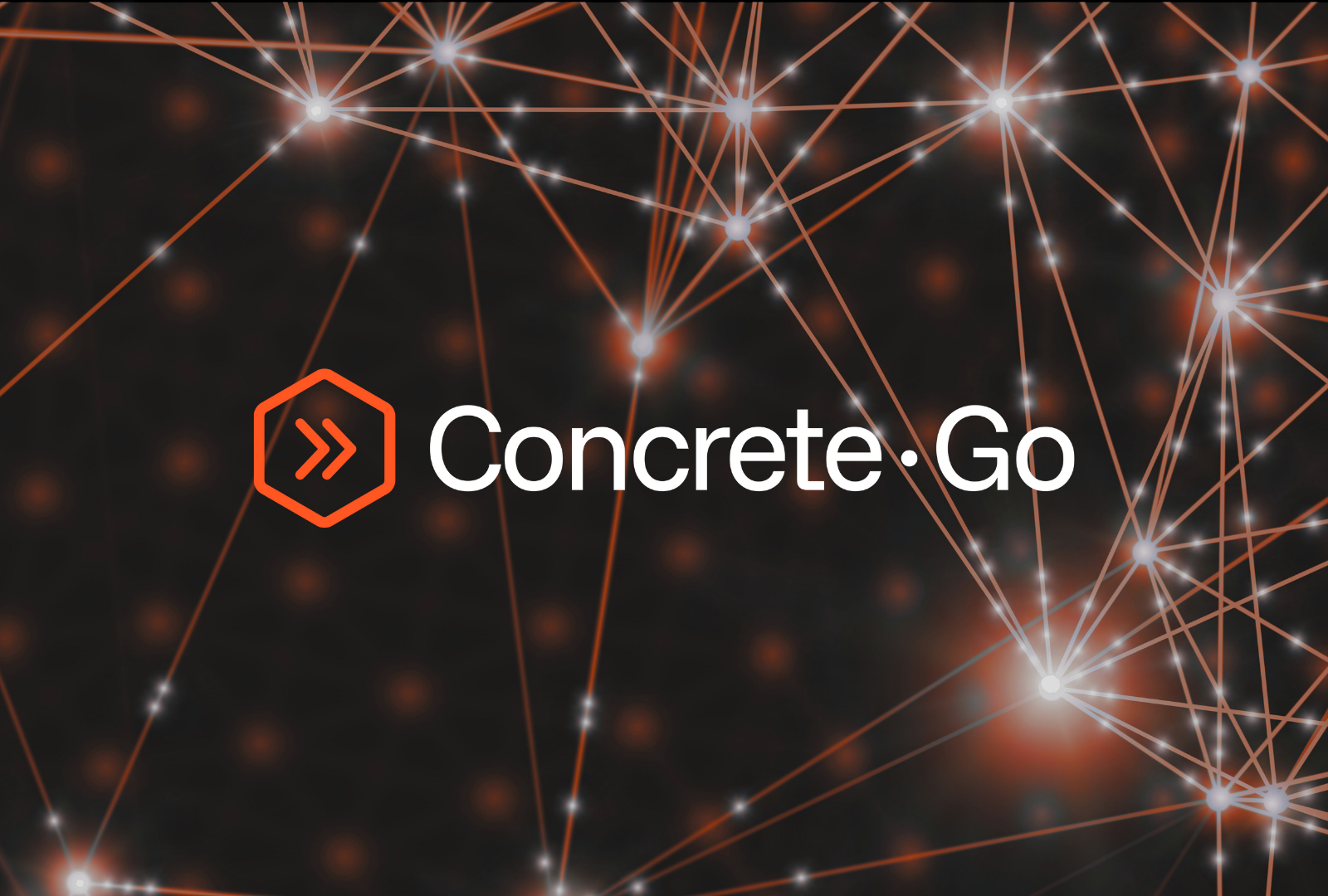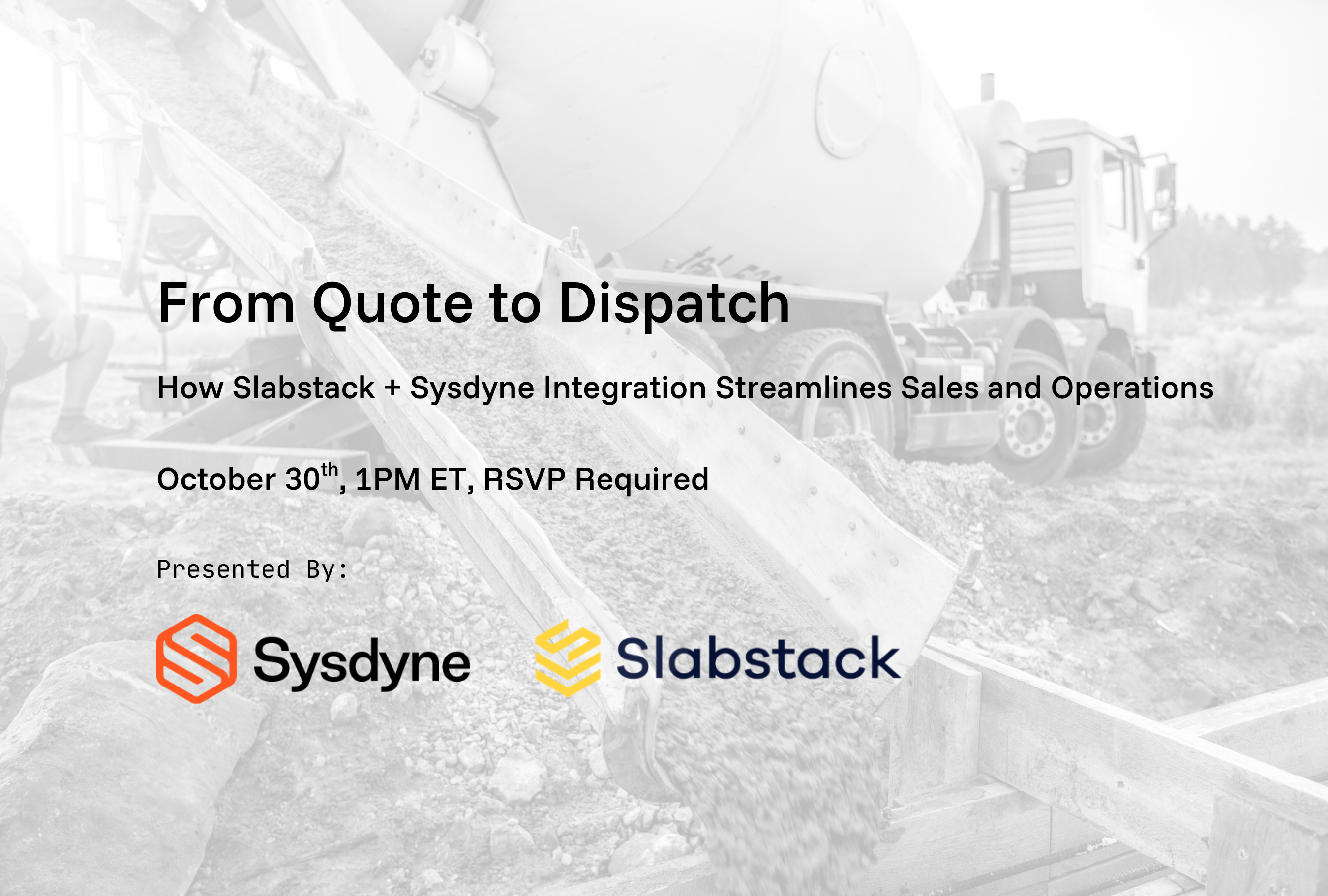
Modernize in 8 Easy Steps: A Ready-Mix Cloud Migration Guide
In today’s competitive concrete market where efficiency is the key to success, many ready mix concrete producers still rely on legacy software and servers installed at the plant that require costly upkeep, manual updates, and local troubleshooting. These systems can be difficult to access data, integrate with other systems, and keep immune from costly downtime.
By contrast, modern cloud-based platforms run on secure, remote servers managed by the provider, offering real-time visibility, automatic updates, security, and scalable performance without the expense and complexity of maintaining in-house infrastructure.
Thinking about making the change? We’re here to help with an easy, eight-step cloud migration guide.
Table of Contents
- The Case For a Cloud-Native System
- Cloud Migration Guide: 8 Steps to a Smooth Ready Mix Concrete Plant
- Choose the Right Partner for Your Cloud Journey
- Frequently Asked Questions
The Case For A Cloud-Native System
It's common for plants to stick with a legacy system because it's been customized over decades and seems “good enough” to keep trucks moving day to day. It can be difficult to migrate systems when employees are used to the way things are. Others hesitate to migrate due to perceived high upfront costs, fear of downtime, or a lack of in-house IT expertise to manage the transition.
This inertia wastes time and costs money.
Research confirms that legacy ready-mix infrastructure creates a 42% performance gap between ideal and actual delivery times. Amazon reports that, by switching to their AWS cloud service, users have seen 63% lower cost of computing, 66% lower cost of networking, and 69% lower cost of storage.
Cloud Migration Guide: 8 Steps to a Smooth Ready Mix Concrete Plant
1. Assess Your Current Infrastructure
The first step toward successful cloud migration is understanding where you stand. Begin by cataloging all critical systems involved in your ready-mix operations. Include dispatch software, batch controllers, truck tracking systems, maintenance logs, and customer portals. Document how each one communicates – or fails to communicate – with the others.
Legacy setups often create silos where batching, dispatch, and fleet tracking operate separately. This disconnection slows production and increases manual coordination. Poor system integration is a leading cause of inefficiency, costing plants both time and money.
Take note of hidden expenses, such as time spent by plant managers troubleshooting IT issues or waiting for server updates. High maintenance costs and routine downtime that causes production delays are strong indicators that your current system has reached its limit.
2. Define Clear Business Goals
A successful cloud migration has to be grounded in clear, measurable objectives. Identify the most pressing problems your operation faces: slow dispatch communication, inconsistent batching, or limited visibility into truck locations. Other achievable outcomes include cutting average delivery time variance, improving on-time delivery, or lowering IT overhead in the first year. Aligning these business goals with your migration roadmap ensures the investment delivers measurable ROI.
Cloud-based systems can directly address these challenges, leading to shorter turnaround times and improving customer satisfaction. For example, ready-mix producers who integrate cloud-enabled GPS fleet tracking and precision dispatching report reductions in idle time. That means less wasted fuel, fewer maintenance costs, and more loads delivered per day.
3. Choose the Right Cloud Partner
Once you know your goals, it’s time to choose a partner who understands the unique challenges of the ready-mix concrete industry. Few vendors can truly support the operational complexities of batching, dispatching, and delivery in real time. It takes many, many launches and migrations to understand how to properly scope, build, integrate, and ultimately, train new users, on new systems.
Look for a fully integrated, cloud native solution that’s purpose-built for concrete operations. It will provide a single, accurate source of truth for every stakeholder.
Other considerations should include:
- SOC 2–certified data security
- Reliable uptime and disaster recovery safeguards
- Seamless integration with accounting and ERP systems
- Real-time GPS fleet tracking and load monitoring
- Mobile access for remote plant and fleet management
- Automatic software updates and maintenance
- Configurable dashboards and reporting tools
- Open APIs for future integrations with IoT and AI applications
- Short implementation timelines with minimal disruption
- Intuitive, easy-to-use interface for all roles
- Expert, onshore customer support for rapid issue resolution
4. Plan a Migration Strategy
Migrating to the cloud doesn’t have to disrupt operations. The best approach is a phased rollout that begins with a pilot location. Select a single ready-mix plant to implement the system, test data flows, and refine your workflows before expanding company wide.
A clear migration plan should outline:
- Data migration steps (from old systems to new databases)
- Integration mapping for all existing tools (ERP, accounting, and QC systems)
- Employee training timelines and milestone check-ins
- Downtime prevention measures such as off-hours data transfer
5. Prioritize Security and Compliance
Data security is one of the strongest advantages of moving to the cloud. In legacy systems, patching and security updates must be managed manually, increasing the risk of vulnerabilities. 52% of global factories still use legacy automation systems. Many struggle to integrate security updates.
Cloud providers eliminate that risk by automating the entire process. Continuous monitoring, data encryption, and multi-region backups ensure your data remains protected from both cyber threats and local disruptions. Compliance certifications such as SOC 2 and GDPR provide assurance that your operation meets industry security standards.
You’ll also gain peace of mind knowing that disaster recovery is built into the system. Redundant data centers, automated backups, and real-time failover mean that even in the event of a local outage, your dispatch and batch operations can continue without interruption.
6. Train and Empower Your Team
Technology adoption succeeds only when your people embrace it. Before go-live, hold interactive training sessions tailored to your dispatchers, batch operators, drivers, and managers. Demonstrate how the cloud system simplifies their daily work by eliminating manual updates, improving communication, and reducing rework. Your well-trained team will deliver more batches per shift, improve concrete quality consistency, and reduce wasted materials. The result will be a direct increase in profit and future flexibility as the world continues to change.
7. Monitor, Optimize, and Scale
The work isn’t over when your new cloud-based system goes live. Cloud platforms continuously generate performance data on batching, delivery, fuel consumption, and maintenance cycles. Leverage dashboards and analytics tools to identify patterns, spot inefficiencies, and make proactive improvements.
Real-time tracking highlights truck routes with recurring delays, while dispatch analytics show which jobs cause scheduling bottlenecks. Adjusting for these factors helps you eliminate waste and tighten delivery precision.
Scalability is another key benefit. During peak construction season, the cloud’s elastic infrastructure automatically expands resources to meet higher demand. When activity slows, those resources contract, ensuring you only pay for what you use. This flexibility turns technology spending into an operational advantage rather than a fixed burden.
8. Future-Proof Your Operation
Cloud migration is not just a cost-saving measure; it’s the foundation for digital transformation. Automatic updates ensure that your systems evolve with industry standards, integrating seamlessly with emerging technologies like AI-driven scheduling and predictive maintenance. Plants using Sysdyne’s cloud-native infrastructure report up to 32% overall project cost savings, alongside better reliability and faster implementation cycles.
With data accessible anywhere and anytime, managers can make informed decisions without being tied to the control room. Whether your goal is to expand into new markets, adopt carbon tracking tools, or integrate with smart jobsite platforms, this agility prepares your business for tomorrow’s opportunities.
Choose the Right Partner for Your Cloud Journey
Sysdyne has led the digital transformation of the ready mix industry for over a decade, and has completed hundreds of implementations for concrete producers of all sizes and complexities. Whether your goal is to modernize dispatch, improve batching precision, or unify multiple plants under one cloud network, we’ve got the tools and expertise you need to get there faster.
Our cloud-native ecosystem includes ConcreteGo for dispatch, BatchGo® (formerly CloudBatch) for batching, GPS tracking and e-ticketing with DeliveryGo® (formerly iStrada), and InsightGo® (formerly Sysdyne BI) business intelligence and optimization. Our integrated system connects every stage of concrete production and delivery in one secure, accessible platform. Our solutions eliminate silos, improve data accuracy, and offer unmatched reliability with 99.9% uptime.
Ready to see how the cloud can strengthen your operations?
Schedule a demo to experience how Sysdyne’s cloud-based solutions can help you streamline workflows, reduce costs, and build a more resilient, profitable ready-mix business.
Frequently Asked Questions
- What are the primary benefits of moving to the cloud for a ready-mix concrete plant?
Cloud-based systems offer ready-mix concrete plants improved data accessibility, scalability, and disaster recovery. They enable real-time process monitoring across multiple sites, promoting operational efficiency and data-driven decision-making. - How should data security and compliance be managed during my ready-mix plant’s transition to the cloud?
It's crucial to choose a cloud provider that offers your ready-mix plant robust security and compliance with local and industry regulations. Encrypt data in transit and at rest and implement strong user access controls to minimize risks. - What integration challenges might arise when connecting cloud platforms to existing ready-mix plant equipment?
Legacy ready-mix equipment may use proprietary protocols or lack network connectivity, requiring the use of gateways or middleware for integration. Careful planning and phased rollout help address compatibility and minimize disruption to plant operations. - How can ready-mix plant downtime be avoided during a cloud migration?
A detailed cloud migration plan, including thorough testing and staff training, will help ensure continuity at your ready-mix concrete plant. Running on-prem and cloud systems in parallel for a period can provide a seamless transition with minimal interruption to production. - What ongoing support and training are necessary after my ready-mix plant’s cloud migration?
Continuous training ensures your ready-mix concrete plant staff can effectively use the new cloud systems and adapt to updates. Ongoing vendor support and periodic reviews help optimize performance and address evolving operational needs.


